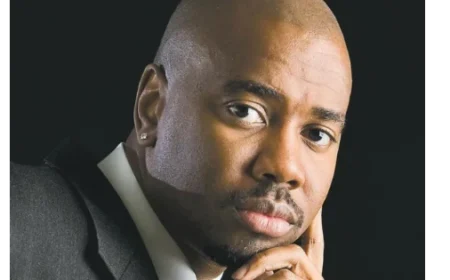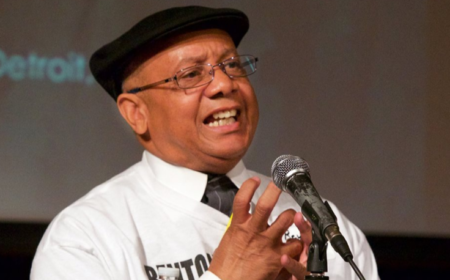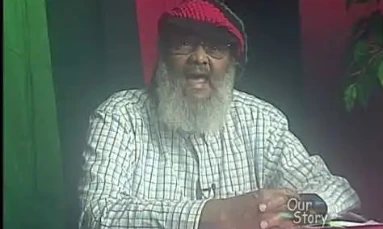By Sybil C. Mitchell, The New Tri-State Defender Published January 24, 2019
On the eve of Dr. Martin Luther King Jr.’s actual birthday (Jan. 15), allegations of counterintelligence versus arguments of unwilling victim of the FBI were passionately voiced during a discussion of Preston Lauterbach’s new book, “Bluff City: The Secret Life of Ernest Withers.”
A capacity crowd filled the book-signing space at Novel Memphis for the event that yielded riveting exchanges regarding the life and actions of Withers. The late and renowned civil rights-era photographer had pretty much unfettered access to Dr. King and movement figures national and local.
Lauterbach’s book attempts a balanced and unbiased perspective on what Withers’ legacy will be: a traitorous informant who spied for the FBI or a blackmail victim forced to do as he was told.
There is no doubt whether Withers funneled information to the FBI and was paid. But, says Lauterbach, the reasons why evolved just as the man did. It was a combination of several factors, he contends.
“Ernest Withers was a man with an extreme hustle bone,” said the author. “You have to remember that he had a wife and eight children to feed. He was paid, but Mr. Withers was doing what he needed to do to feed his family.”
Documents released after his death chronicled his secret relationship with the FBI. Those documents formed the basis for “A Spy in Canaan: How the FBI Used a Famous Photographer to Infiltrate the Civil Rights Movement,” a book by ex-newspaper investigative reporter Marc Perrusquia.
On Monday night, Lauterbach talked at length about the now iconic “I Am A Man” sign and slogan that came to embody the 1968 sanitation workers strike in Memphis and a struggle for racial equality. The famous photo that galvanized the striking workers and turned myriad eyes on Memphis showed Withers’ gift for not only framing the moment, but staging a scene.
“His motto was, ‘Pictures tell the story.’ The sticks that held the signs were used as weapons of violence in that first march. When the rioting broke out, it served the FBI’s purpose of discrediting Dr. King as a nonviolent leader and to embarrass him,” said Lauterbach.
“The Black Invaders took the blame for the violence, but they were actually there to protect Dr. King. J. Edgar Hoover needed that violence to be pinned on the Invaders. He wanted to create as much conflict between the SCLC (Southern Christian Leadership Conference]) and the black power group.
“Withers admitted buying the lumber for the sticks and the saw for the lumber,” said Lauterbach. “As the rioting began, the police swooped down on marchers with excessive force.”
A spirited exchange began between those who saw Withers’ actions as betrayal and others who leaned more sympathetically to characterize his actions.
“We marched with Dr. King. We were there,” said the Rev. Dr. L. LaSimba M. Gray Jr., pastor emeritus of New Sardis Baptist Church. “That is, perhaps, the most damnable revelation – that those sticks were made as weapons of violence.
“He could have gotten us killed. The rioting started, and the police came down in force. I’m wondering now if I might have been a target of the FBI. My family might have been put in danger.”
The Rev. Bill Adkins, pastor of Greater Imani Cathedral of Faith, recalled the day of the march.
“We were lining up for the march,” said Adkins. “And just before the march started, a pickup truck pulled up, loaded with signs. Anyone who wanted a sign could get one. After the march got started, the next thing we knew, windows were being broken, and the police moved in.
“I agree that we could have all been killed or seriously hurt. It never occurred to anyone, I’m sure, that the sticks attached to the signs were weapons of violence. These revelations are very disturbing.”
While some believe that Withers was guilty of counter-spying and working against leaders of the civil rights movement, others felt the term “informant” simply did not apply.
While the photojournalist was providing Hoover and the FBI information on everything he could, there is no proof that anyone was actually hurt by his reports, one member of the audience suggested.
“It could very well be that Withers didn’t tell the FBI anything they didn’t already know,” said Lauterbach.
“But however one sees him – as either a good man or a shadowy figure – Mr. Withers endured many trials and hardships as he recorded the movement with images that really did tell the story,” Lauterbach said.
“He was down there in Little Rock (Arkansas) when his mentor, former Tri-State Defender editor Alex Wilson, was beaten so badly that he sustained neurological damage to the head. This was a man he was very close to. Informant or not, the FBI was 100 percent the real power structure. It was Hoover who manipulated the civil rights movement. Let’s not forget, Hoover tried to make Dr. King commit suicide.
“Withers was a victim of ‘economic segregation.’ With a wife and eight children, he must have felt the pressure of financial hardship.”
Lauterbach explained that Withers “might not have seen himself as an informant.”
Adkins wasn’t buying that.
“Mr. Withers took photos of everything, including strategy meetings and closed sessions where we planned every move,” said Adkins. “Nobody put Mr. Withers out of those meetings. He was constantly moving around taking photos of everyone.
“We had no idea he was cooperating with the FBI. There is no way he didn’t know that he was acting as an informant and betraying the movement.”
Lauterbach countered with the argument that Withers was a conservative and concerned about the communist leanings and anti-war sentiment that was ever-growing.
“He may not have felt he could do anything other than what he was doing – reporting the actions of civil rights leaders to the FBI,” said Lauterbach.
“There are facts to support both sides – that Mr. Withers became an FBI informant for money, or he felt it was something he had to do to care for his family,” said Lauterbach. “Readers are left to make their own conclusions.”
Asked whether Withers had any regrets in his latter years, Lauterbach said he believes so, pointing to this reflection attributed to Withers:
“I was the cause of those signs being used as clubs. I bought the lumber and the saw to cut that lumber. I started the violence. People were hurt by the police and attacked with tear gas and billy clubs.”
READ MORE AT: https://lasentinel.net/ernest-withers-undercover-agent-for-fbi-or-forced-to-be-a-spy.html




